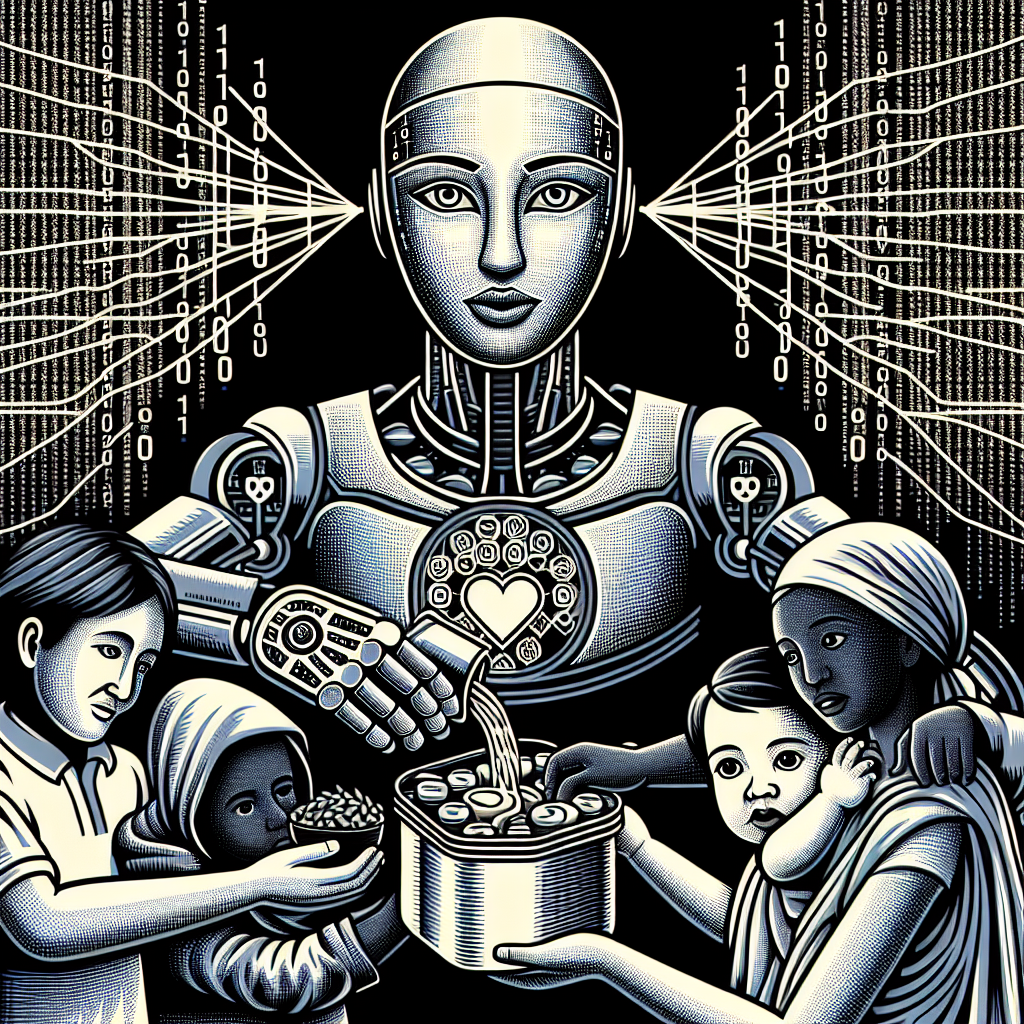The Role of AI Automation in Humanitarian Aid
Humanitarian aid organizations are constantly faced with challenges such as limited resources, time constraints, and the need to provide assistance to vulnerable populations in the most efficient and effective way possible. In recent years, artificial intelligence (AI) automation has emerged as a powerful tool that can help address these challenges and improve the delivery of humanitarian aid.
AI automation refers to the use of AI technologies such as machine learning, natural language processing, and computer vision to automate tasks that would typically require human intervention. This can include tasks such as data analysis, decision-making, and process optimization. By leveraging AI automation, humanitarian aid organizations can streamline their operations, reduce costs, and deliver aid more quickly and effectively to those in need.
One of the key areas where AI automation is making a significant impact in humanitarian aid is in data analysis. Humanitarian aid organizations collect vast amounts of data from various sources, including satellite imagery, social media, and field reports. Analyzing this data manually can be time-consuming and labor-intensive, making it difficult to extract valuable insights in a timely manner. AI automation can help expedite this process by using algorithms to analyze large datasets and identify patterns and trends that can inform decision-making.
For example, AI automation can be used to analyze satellite imagery to assess the extent of damage caused by natural disasters such as earthquakes or hurricanes. By automating this process, humanitarian aid organizations can quickly identify areas that require immediate assistance and allocate resources accordingly. Similarly, AI automation can be used to analyze social media data to monitor the spread of diseases or track the movements of displaced populations, providing valuable insights that can inform humanitarian response efforts.
Another area where AI automation is proving to be valuable in humanitarian aid is in decision-making. Humanitarian aid organizations often face complex and dynamic situations where decisions need to be made quickly and under uncertain conditions. AI automation can help support decision-making by providing real-time insights and recommendations based on data analysis. For example, AI algorithms can be used to predict the likelihood of disease outbreaks or food shortages in a given region, allowing aid organizations to proactively plan and respond to potential crises.
In addition to data analysis and decision-making, AI automation can also help optimize processes within humanitarian aid organizations. For example, AI-powered chatbots can be used to streamline communication with beneficiaries and provide them with information and support in real-time. This can help aid organizations reach more people and deliver services more efficiently. AI automation can also be used to optimize supply chain management, by predicting demand for aid supplies and optimizing delivery routes to ensure timely and cost-effective distribution.
Overall, AI automation has the potential to revolutionize the way humanitarian aid is delivered, making it more efficient, effective, and responsive to the needs of vulnerable populations. By leveraging AI technologies, humanitarian aid organizations can improve their ability to analyze data, make informed decisions, and optimize processes, ultimately enhancing their impact on the ground.
FAQs
Q: How is AI automation being used in disaster response efforts?
A: AI automation is being used in disaster response efforts to analyze satellite imagery, monitor social media data, and support decision-making. By automating data analysis and decision-making processes, aid organizations can respond more quickly and effectively to disasters.
Q: Is AI automation replacing human aid workers in humanitarian aid?
A: AI automation is not replacing human aid workers in humanitarian aid, but rather augmenting their capabilities. By automating routine tasks and providing real-time insights, AI technologies can help aid workers make informed decisions and deliver aid more efficiently.
Q: What are some of the challenges associated with using AI automation in humanitarian aid?
A: Some of the challenges associated with using AI automation in humanitarian aid include data privacy concerns, ethical considerations, and the need for technical expertise. It is important for aid organizations to address these challenges and ensure that AI technologies are used responsibly and ethically.
Q: How can humanitarian aid organizations integrate AI automation into their operations?
A: Humanitarian aid organizations can integrate AI automation into their operations by partnering with technology companies, hiring data scientists and AI experts, and investing in AI technologies. It is important for organizations to develop a clear strategy for incorporating AI automation into their work and to ensure that staff are trained to use these technologies effectively.

